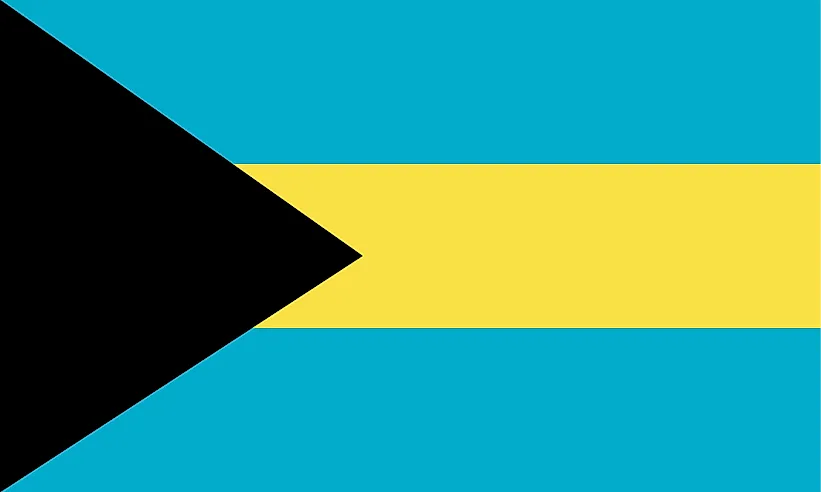
Bahamas
| Continent | Americas |
| Capital | Nassau |
| Population | 327,316 |
| GDP | $9.07 Billion |
| GDP per Capita | nan |
| Dialing Code | +1-242 |
| ISO Code (2-letter) | BS |
| ISO Code (3-letter) | BHS |
Bahamas Landscapes






About Bahamas
Welcome to The Bahamas, an archipelagic nation of stunning beauty and rich maritime heritage. Comprising over 700 islands and more than 2,000 cays scattered across 100,000 square miles of crystal-clear Atlantic waters, this tropical paradise is home to approximately 400,000 people. Just 50 miles off the coast of Florida, The Bahamas combines pristine beaches, vibrant culture, and modern amenities to create one of the world’s premier tourist destinations.
Geographic Features and Natural Beauty
The Bahamas’ geography is a masterpiece of natural beauty, with islands ranging from large inhabited landmasses to tiny uninhabited cays. The archipelago sits on two vast submarine banks, the Great Bahama Bank and the Little Bahama Bank, creating shallow waters that give the islands their famous turquoise hue.
The islands feature diverse ecosystems, from pristine coral reefs to extensive mangrove swamps, pine forests, and salt flats. The world’s third-largest barrier reef system protects the islands and provides habitat for countless marine species. The famous Blue Holes, underwater cave systems found throughout the islands, are among the most extensive in the world.
Andros, the largest island, features the world’s largest collection of blue holes, while the Exumas offer some of the most pristine waters in the Caribbean, home to the famous swimming pigs and endangered rock iguanas.
Cultural Heritage and Traditions
Bahamian culture is a vibrant blend of African, British, and American influences, shaped by the nation’s history of slavery, colonialism, and maritime trade. This rich heritage is expressed through music, particularly Goombay and Rake n’ Scrape, traditional forms that use handmade instruments and rhythmic storytelling.
The colorful Junkanoo festival, celebrated primarily during Christmas and New Year’s, showcases elaborate costumes, music, and dance, representing one of the nation’s most important cultural traditions. Bahamian cuisine reflects the bounty of the surrounding waters, with conch, rock lobster, and various fish prepared in distinctive local styles.
Straw work and craft-making remain important cultural practices, with local artisans creating intricate bags, hats, and decorative items from dried palm fronds, continuing traditions passed down through generations.
Historical Journey
The Bahamas’ history begins with the Lucayan people, who inhabited the islands until Christopher Columbus made his first New World landfall on San Salvador in 1492. The islands later became a British colony and served as a strategic location for pirates during the golden age of piracy in the 17th and 18th centuries.
The arrival of Loyalists from the American Revolution, along with their enslaved people, significantly influenced the islands’ social and economic development. After the abolition of slavery in 1834, freed Africans helped shape the unique culture that characterizes The Bahamas today.
The nation gained independence from Britain in 1973 but remained a member of the Commonwealth, maintaining strong democratic institutions and a stable political system.
Modern Economic Landscape
Today’s Bahamian economy is primarily driven by tourism and offshore banking. The tourism sector accounts for approximately 60% of the GDP and employs about half the workforce. The nation’s proximity to the United States, English-speaking population, and sophisticated infrastructure make it an attractive destination for both tourists and investors.
The financial services sector is the second pillar of the economy, with The Bahamas established as a leading offshore banking center. The government continues to develop other sectors, including agriculture and fisheries, to diversify the economy.
International Relations and Global Position
The Bahamas maintains strong international relationships, particularly with the United States, Canada, and other Caribbean nations. As a member of CARICOM and various international organizations, the country plays an active role in regional affairs and global initiatives, particularly regarding climate change and environmental protection.
Did You Know?
• The Bahamas’ Andros Island features the world’s largest collection of blue holes, mysterious underwater cave systems?
• The islands are home to the world’s first land-and-sea reserve, the Exuma Cays Land and Sea Park?
• The famous swimming pigs of Exuma have become one of the country’s most unique tourist attractions?
• The deepest known blue hole in the world, Dean’s Blue Hole, plunges to a depth of 663 feet on Long Island?
Conclusion
The Bahamas represents a unique blend of natural beauty, cultural richness, and modern development. From its crystal-clear waters to its vibrant traditions, from its sophisticated financial sector to its world-class tourism industry, The Bahamas continues to enchant visitors while maintaining its distinctive identity. As it faces the challenges of climate change and economic diversification, The Bahamas remains committed to sustainable development and preserving its natural and cultural heritage for future generations.